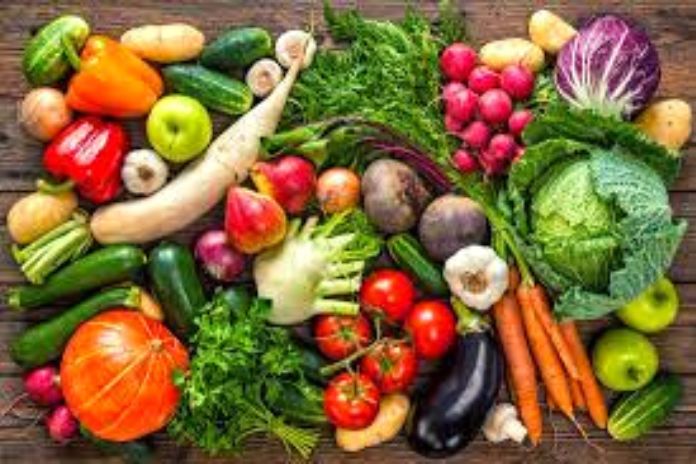Antioxidants are substances of plant origin capable of counteracting free radical damage and preventing disease. Surely you have heard many times about foods rich in antioxidants. But what exactly are these substances, and what functions do they perform? We know that a good supply of antioxidant substances ensures better health. Their function as oxidative stress reducers, for example, made them so fashionable.
What Are Antioxidants?
They are substances synthesized by plants in their various parts, such as fruit, leaves, branches, roots, etc. The presence of hydroxyl groups characterizes them (OH) joined together by benzene rings and can prevent damage caused by free radicals.
What Are They For?
The antioxidants present in food are therefore essential. First, they are responsible for the organoleptic properties of food; also because once ingested, they protect us from diseases such as cancer, cardiovascular and neurodegenerative diseases. Following a diet rich in antioxidants helps prevent numerous diseases or improve situations such as:
- An accumulation of free radicals causes premature aging.
- Nervous system disorders. Antioxidants have been shown to help prevent dementia, Alzheimer’s, and Parkinson’s, thanks to a protective effect on neurons.
- Cardiovascular diseases such as atherosclerosis.
- Cancer: Antioxidants can inhibit carcinogenesis and cell proliferation; they improve DNA repair processes and reduce oxidative stress.
What Is Oxidative Stress?
To understand how antioxidants work, it is necessary to know what oxidative stress is. In cellular metabolism (the process in which glucose reacts with oxygen to produce energy in the form of ATP), reactive oxygen species are released. They are free radicals with a negative effect on our bodies.
In a young and healthy person, oxygen free radicals are rapidly eliminated from the cell by natural antioxidants. In chronically ill or older adults, however, this mechanism is lacking; the fact that favors the development of chronic pathologies and accelerates aging
Types Of Antioxidants
They can be of two types: endogenous (produced by cells) and exogenous (they enter the body through food or supplements. So let’s see which are the most critical food antioxidants.
C Vitamin
It is an essential antioxidant because it enhances the effect of other substances (a similar mechanism occurs between vitamin E and selenium).
- Neutralize singlet oxygen (O2).
- I am capturing hydroxyl radicals and superoxide anions.
- Regenerate the oxidized form of vitamin E.
This vitamin mainly synthesizes collagen and elastin; both compounds are essential for developing and adequately functioning blood vessels, tendons, bones, and ligaments. It is also necessary to synthesize norepinephrine and carnitine and transform cholesterol into bile acids. Five portions of fruit and vegetables (3 and 2 vegetables) ensure minimum consumption of 200 mg of vitamin C.
- Peppers.
- Brussels sprouts.
- Broccoli.
- Tomatoes.
- Kiwi.
- Strawberries.
- Oranges.
- Lemons.
Vitamin C has been shown to play an essential role in the immune system and thus improve the body’s defenses.
Vitamin E
It is a set of phenolic compounds known as tocopherols and tocotrienols. Alpha-tocopherol is the most common and is, biologically, the substance with the most significant vitamin action. Vitamin E is considered the most important protective factor of lipid cells. Its action is to:
- Protect the polyunsaturated fatty acids of cell membrane phospholipids from oxidation.
It is present in foods such as olive oil, corn, soy, rapeseed, safflower, or sunflower. Other eats contain dried fruit, such as almonds, peanuts, hazelnuts, walnuts, and raw vegetables, including carrots and spinach.
Polyphenols
Polyphenols are a large group of substances with very different structures. In the group of flavonoids alone, considered the most important, more than 5,000 distinct compounds are known. Numerous phenolic compounds are responsible for the organoleptic characteristics of plants. For example, anthocyanins impart a blue color to fruits and vegetables and red wine. From a functional point of view, many polyphenols have the following properties:
- Anti-inflammatory: they inhibit enzymes and C-reactive proteins involved in inflammatory processes.
- Estrogenics , such as isoflavones, lignans and resveratrol.
- Ability to bind to metals and proteins – as occurs with tannins – gives them antimicrobial activity.
They are abundant in fruits, vegetables, grains, legumes, and some drinks and infusions such as tea, coffee, red wine, and chocolate.
Carotenoids
They are pigments synthesized by plants during the photosynthesis process. Their direct action in the human body neutralizes reactive oxygen species (ROS). ROS have an essential role in developing and maintaining cellular oxidative stress.
Carotenoids are transformed into vitamin A; the role of this vitamin is essential. It is known that it protects the integrity of the eye’s retina and the immune system, but it also performs other functions. Foods that contain carotenoids are, for example:
- Carrot.
- Orange.
- Fishing.
- Mandarin.
- Tomatoes.
- Watermelon.
- Papaya.
- Spinach.
- Broccoli.
Remember To Also Include Antioxidants In Your Diet
Therefore, remember to bring a good variety of fruit and vegetables to the table daily. This habit guarantees the supply of antioxidants necessary for our body and reduces the risk of getting sick.
Read Also: Drinking Coffee Is Good For The Heart!
